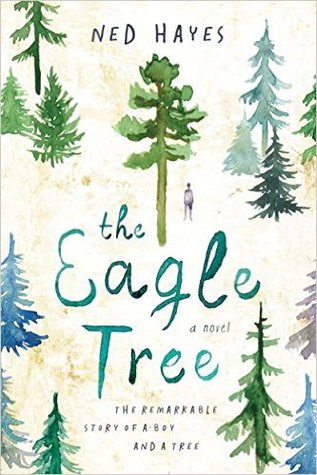More on this book
Community
Kindle Notes & Highlights
“If the global temperature rises by only four degrees Celsius over the next fifty years—and it’s probably going to do that—then all of the Appalachian forests will die. Already, the Elms and the Chestnuts are gone, and the Hemlocks and the Flowering Dogwoods. And I didn’t get a chance to climb them yet. Before we know it, the forest will just go away and die off.”
“When the global temperature rises another degree or two, all of the Red Spruces and the Fraser Firs will be gone. Then the Sugar Maples and the Mountain Ashes will die. These kinds of trees cannot live in that temperature zone. Ninety percent of Fraser Firs are already dead there.”
Trees do not require you to make certain sounds to be understood. They are simply present and ready for you to climb at any time. Trees are easier.
I think I have learned something about falling. It is not necessary to have a plan; sometimes you can simply act. This is an idea I can hold on to.
The nitrogen cycle is a kind of miracle. The nitrogen cycle requires bears. Brown bears catch salmon in streams and rivers. Then the brown bears carry the salmon farther inland, and they bury these nitrogen-rich fish in the ground for later retrieval. But bears have short memories, and often they forget the fish where they left them, far inland from the streams. And the fish bodies decompose, leaving a reservoir of nitrogen in the ground. This creates a rich and fertile environment for large trees to grow, and in fact without the nitrogen deposited by the bears, very large old-growth trees
...more
In a very true sense, bears created the old-growth forests. But now the nitrogen cycle is broken. We do not have bears in Olympia anymore, that I know of. There are no bears to plant salmon in the forest.
It seems that by fertilizing forests, salmon are actually protecting their own habitat. Trees on the banks of salmon-filled rivers grow faster than those along salmon-free rivers. The nitrogen helps create trees that keep salmon streams shaded at the right temperature for the fish.
everything in the forest contributes to the whole. The dead trees are just as much a part of the ecosystem as the living ones; they contribute nutrients and seedbeds for the next generation of life. The whole system is part of one whole.
Coqui frogs from the American territory of Puerto Rico can hit a sound level that is up to ninety decibels strong.
I am especially interested in shadows and light that are changed by branches or leaves. So that is mostly what I watch when I am up in the trees. I watch the shadows, I watch the lights, and I watch the leaves move in the wind.
We are expected to consider human beings as individuals, and each person we encounter we are supposed to treat as an individual. I am even supposed to learn a name for each person! I don’t learn those names, most of the time. I don’t even know faces or voices. But now that I have had some experience in dealing with people, and trying to communicate with the broader mass of people, I can see that they are like the trees in the mist here—we are all connected; we are all part of one ecosystem.
There are many causes of trees dying off. In the Southwest, there is the engraver beetle that has killed the Piñon Pine, and the spruce beetle and the fir beetle and the mountain pine beetle. It would be easy to blame the insects. But the truth is that all of this insect activity is coming from warming temperatures and increased stress—all of which can be directly attributed to human activity. The beetles and other insects are just our little soldiers, following in our footsteps to kill what we have given them. For example, the Canadian province of British Columbia, just north of Washington
...more


